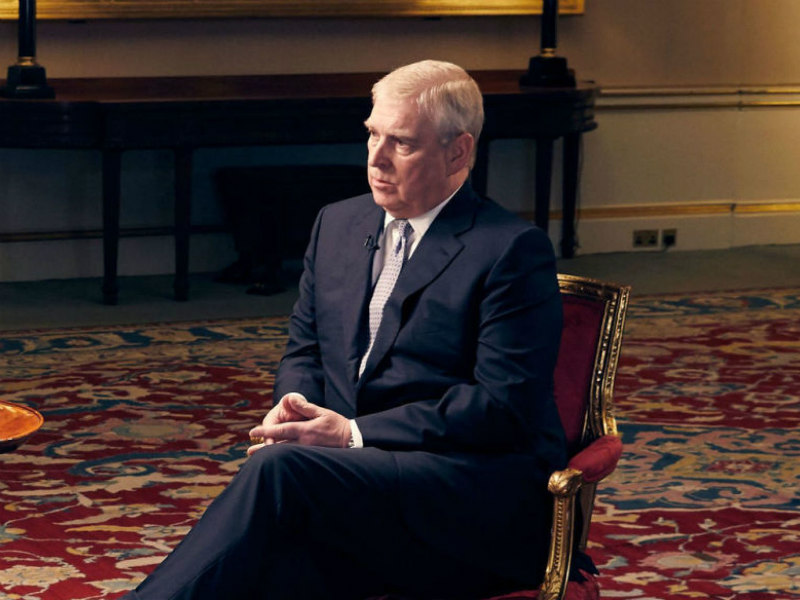Holmes Report 27 Jan 2020 // 6:37AM GMT

Crisis Review landing page (Parts 1-3) here
8. Things go from bad to worse for PG&E
California utility PG&E had a bad year in 2018, after the Camp Fire that killed 85 people in and around the town of Paradise was traced to the company’s transmission lines. That marked the fourth consecutive year that the utility was linked to fires in the state, which took the company’s reputation to an all-time low and led to a bankruptcy filing in January. Remarkably, things got even worse as 2019 progressed.
PG&E cut off power to more than 2 million in October—a precaution the utility said was to avoid another wildfire—and this found the crisis compounded by communications problems, as its website crashed numerous times due a heavy load of traffic from people looking for information about when power would be restored.
After CEO Bill Johnson pledged to do better, the new website crashed again, and a tweet from the company appeared to direct people to a website, pspsupdates.com, which offered no information and appeared to be an unregistered web domain.
Irwin Redlener, director of the National Center for Disaster Preparedness at Columbia University, was scathing in his assessment: “It’s preposterous to even make a statement that they didn’t anticipate so many people would go to the website. I don’t know what they were thinking or expecting, but shutting down power for 800,000 people, for them not to expect an enormous amount of traffic to their website really stretches their credibility here.”
“Where was Bill Johnson?” Douglas Fruehling, editor-in-chief of the San Francisco Business Times asked in an op-ed. “Despite the utility enduring a four-day, self-inflicted power crisis gripping the whole Bay Area, the CEO of PG&E did not appear on the evening news. He did not address the public. He did not give interviews to any print publications, according to Lexis/Nexis and Google searches….
“His absence during the crisis speaks volumes both about his leadership and the company culture he inherited at PG&E, by all accounts a corporate disgrace. A good leader stands up when under fire. A good leader explains his decisions. A good leader works the front lines with her employees when facing crisis.”
Meanwhile, questions were raised about the company’s lobbying expenditures, which soared in 2018 and drew the attention of a US District Judge, who suggested that the money might be better spent on the huge cost of keeping trees clear of utility lines. (There were also complaints about the company’s spending with public relations agencies, including Hill+Knowlton Strategies and Teneo Strategy; it’s rarely a good sign when a company’s PR activities become part of the story.)
In November, Johnson told regulators that the blackouts could continue for 10 years, and in December the company settled with victims of the various wildfires for $13.5 billion—a move expected to pave the way for its emergence from bankruptcy. The reputational damage will take much longer to undo. — PH
9. McDonald's CEO violates company policy
It’s a rare crisis that sees all involved emerge with their reputations intact—or even enhanced—but that appeared to be the case when McDonald’s took the decision to part ways with CEO Steve Easterbrook after it emerged that he had violated company policy by engaging in a consensual relationship with an employee.
The company’s code of conduct was explicit about intra-company relationships: employees with a direct or indirect reporting relationship cannot date or have a sexual relationship. Easterbrook signed that document, published in September 2018, and addressed all colleagues on “doing the right thing” at the time.
Nevertheless, the decision could have been a big issue for the company. Since taking the CEO’s job in 2015, Easterbrook had presided over an extended period of sales growth and been lauded for a series of initiatives including a restaurant re-modeling program and the introduction of all-day breakfast. The company’s share price nearly doubled during his tenure.
But in the context of the #metoo movement, and the company’s values, the departure was inevitable. “Companies and executives and boards are being far more sensitive to personal relationships, whether consensual or nonconsensual, than has been true in the past,” said Erika James, the dean of Emory University’s Goizueta Business School.
The company was widely praised for its swift and decisive response, which ensured that the story was off the front pages within days.
“Of course, it’s never a good thing when a company finds itself splashed across homepages because its leader exhibited poor judgment,” wrote opinion columnist Sarah Halzack at Bloomberg News. “Nevertheless, shareholders should be reassured that the company’s board made the right decision in a difficult situation, demonstrating that these kinds of violations will not be tolerated at any level. That sets a tone of accountability and fairness for the whole organization that could prove essential in fostering a healthy corporate culture.”
Easterbrook himself did not seem to suffer any reputational damage either. He continues to lecture on corporate reputation at Oxford University (his alma mater). Said Rupert Younger, the program’s founder, Easterbrook has “always been a great and extremely useful lecturer on corporate reputation, and he can now lecture from yet another perspective.” — PH
10. WeWork's dramatic tumble
WeWork’s dramatic tumble from a pre-IPO unicorn to a startup with collapsed valuation and a disgraced CEO has made it a cautionary tale of hubris, extravagance, and poor business planning. Reports of what actually happened at the office leasing startup are astonishing: co-founder Adam Neumann’s bizarre behavior, questionable business dealings, an out-of-control workplace culture. As a result, its $47bn took a free-fall, landing at around $8billion and its once-hyped IPO was shelved.
“You have to give the WeWork PR team considerable credit for keeping their former CEO out of the news for as long as they did, given what we now know about his behavior and business dealings,” says Anthemis CMO Leslie Campisi. “It's impossible to talk about WeWork's reputation problems without addressing the realities of venture capital, in which the marketing strategy is often the entire business model.” She adds, others startups like Away and Casper, have also relied too heavily on a good brand, rather than a functioning business model.
Richard Levick, CEO of Levick Strategic Communications, also points to the startup’s “largely unscalable” business strategy. “No amount of money from SoftBank or brilliant communications can undo a bad business plan. Maybe Uber and Lyft are just taxi companies and WeWork is just a real estate company. The market is catching up with the disrupted economy,” he adds.
Hadley Wilkins, who formerly led marketing for the VC firm Redpoint Ventures, advises WeWork’s new management team to “commit to communicating early and often about what’s next and be brutally honest and transparent with employees even as the answers are being figured out in real-time.”
Meanwhile, Campisi warns: “WeWork is a cautionary tale for high-minded marketing and PR people not to fall in love with building a brand whose leadership, and business model, is not worthy of it.” — AaS
11. Juul's public health crisis
When your company is the subject of a Time magazine cover story called “The New American Addiction: How Juul Hooked Kids and Ignited a Public Health Crisis,” it’s fair to say that things are not going well. When a story appears detailing the ways your “New Marketing Is Straight Out of Big Tobacco’s Playbook,” then your situation gone from bad to worse to as bad as it gets in terms of crisis PR.
What is perhaps most surprising is that Juul’s reputation, for many years, was what USA Today described as “high-tech cool.” Wrote Nathan Bomey, “The pendulum swing in the reputation of Juul Labs—from a less-harmful cigarette alternative to a public danger—has engulfed the vaping company in crisis.”
As Time reported, “Juul’s rapid growth has been accompanied by remarkably little oversight or regulation. And while there is a legitimate debate over whether e-cigarettes are safer for adult smokers than traditional cigarettes, and whether they can help addicts quit smoking, critics argue that Juul has assiduously followed Big Tobacco’s playbook: aggressively marketing to youth and making implied health claims a central pillar of its business plan.”
Like the Boeing crisis, which we discussed in the first part of our crisis review, lax regulation played a part, as John Gapper of the Financial Times explained: “Juul was permitted to sell higher strength pods in the US than in Europe and to add flavors.”
Storm clouds appeared on the horizon last November, when the FDA announced that almost 21% of high school students had vaped during the previous month, a 78% increase over the year before. The 2018 National Youth Tobacco Survey found that about 3.5% of high school students vaped every or almost every day. And use among eighth-graders more than doubled in 2018, according to data from the Department of Health & Human Services.
In September, the Food & Drug Administration issued a warning letter accusing the company of violating federal regulations by promoting its e-cigarettes as a safer option than cigarettes. Two days later, the Trump Administration said it planned to ban flavored vaping products. New York banned flavored e-cigarettes, following the lead of Juul’s hometown, San Francisco.
The backlash has already contributed to the collapse of a possible $200 billion merger between Altria and Philip Morris International and to the departure of CEO Kevin Burns—and the company says its expects to lose up to 75% of sales due the FDA crackdown. Still, Juul continues to believe that its products can be marketed to adults as a healthier—if not necessarily healthy—alternative to traditional cigarettes.
Critics are skeptical, as an article in The Atlantic notes: “The company’s marketing strategy relies on a now familiar sleight of hand, ignoring this mounting evidence of health complications and pivoting to a narrative of relative safety. The ads bank on Big Tobacco’s villainous reputation, earned through decades of scheming and misrepresentation, to make Juul seem noble in contrast: like an e-cigarette hero, swooping in to save the day.”
While there is merit to the argument that e-cigarettes are safer than traditional tobacco products, it is difficult to believe that the company had not deliberately targeted teens with its marketing—from the flavored products to colorful ads featuring young models. "The advertising reached the wrong people—especially the younger generation," Vamsi Kanuri, assistant professor of marketing in the University of Notre Dame’s Mendoza College of Business, told USA Today. "Because of how the messaging was designed, I think it drew the wrong audience."
That mistake may prove fatal. — PH
12. Prince Andrew's car-crash interview
Whether you’re a staunch republican or an avid monarchist, I’ll wager there’s not a comms pro on the planet who wasn’t shouting at the television watching Prince Andrew being interviewed on the BBC’s flagship current affairs show, Newsnight. There were so many problems with the November 16 broadcast event, from premise to execution to fall-out, that it was truly the epitome of a PR car crash. Perhaps even the worst of its kind.
It’s unclear exactly who advised the prince to do the interview with anchor Emily Maitlis – a bright, incisive journalist who doesn’t suffer fools and was never going to give Prince Andrew an easy ride. The special episode was billed as a chance for the Duke of York to explain his continued friendship with American financier Jeffrey Epstein, who died in prison last August after being convicted of sex offences. It also addressed allegations that Andrew himself had had sex with teenager Virginia Giuffre, which he has always denied. Andrew’s new PR advisor, Jason Stein, apparently advised against the interview, before parting ways with his employer and moving to Finsbury almost before he had started work.
The interview itself – which garnered Newsnight’s highest-ever viewing figures of around two million – was trending immediately, for the rest of the weekend, and beyond. It would be an understatement to say that Prince Andrew did not come across well. If he’d been media trained at all, it didn’t show. The overwhelming impression was not (presumably as intended) of an innocent bystander, but the pinnacle of white male privilege: he was either (at best) incredibly naïve, or simply couldn’t conceive either that he’d done anything wrong, or that anyone would dare to accuse him of improper behaviour.
The exchange was free of apology, sympathy for Epstein’s victims, or self-awareness: the most he would say was that he had “let the side down,” but no-one was absolutely sure which side he meant.
Some of his absurd quotes were instant memes, on topics that would have been utterly bemusing to anyone who wasn’t watching, and barely comprehensible to those who were. There was far too much information on whether the prince did or didn’t sweat. A branch of Pizza Express in the town of Woking became briefly famous, with commentators noting that the prince seemed more appalled by being in that relatively lowly establishment than the realisation that his mate Epstein was quite probably a paedophile.
As Enero Group non-executive director David Brain commented on his Echo Chamber podcast that week with our CEO and editor-in-chief Arun Sudhaman: “It was mistake upon mistake. The first mistake was behaving badly. The second mistake was believing you can go into an interview to draw a line under this, either without a compelling narrative that clears your name, or without recognising the human implications of what Epstein had done and not being prepared to make an apology.”
Further, said Brain, “picking Newsnight was walking into the jaws of some of the best-trained journalists on the planet. It didn’t look to me that he’d done much training – any PR person worth their salt would have said talking about Pizza Express and sweating was weird and would lead to social memes. There was a total lack of understanding how the world would view how he’d behaved.”
And then there was the fallout. The initial whisper was that, astonishingly, Andrew wanted to do a second, follow-up interview to clear up any “misunderstandings” that had arisen from the first. Thankfully for the Palace (not to mention the nauseous viewing public) this was quickly quashed. Then came the real blows, as corporate support for Andrew’s charitable projects started to be withdrawn, and the many NGOs of which he was a patron expressed concern. Finally, the announcement was made that the duke was “retiring” from royal duties.
When the crisis management effort has to be crisis managed itself, you know things have gone seriously askew. While the “royal scandal” headlines have shifted to Megxit for the time being, there’s no question Prince Harry’s uncle will be a case study in the crisis management textbooks for many years to come. — MPS
13. USC's admissions scandal
The crisis has all the makings of a made-for-TV movie: a private university in Los Angeles rife with corruption, entitled celebrities getting their comeuppance, and an affirmation that those who join the ranks of the elite might not be deserving. So of course, the admissions scandal hit especially hard — but it’s one in a series of crises that have rocked USC over the last few years.
With this scandal — in which wealthy parents bribed college counselors to manipulate standardized tests and athletics records to get their children into the school— there were many parties at fault and it was, at first, hard to know how USC would emerge. But ultimately, the college had to take disciplinary action against several of its own employees.
“This was one of the most damaging scandals both for colleges as well as for the privileged elite in recent history,” says crisis counselor Sam Singer. “Colleges are going to need to do more for all of their applicants across the board in making clear what it takes to get accepted.”
Meanwhile, brand advisor Hadley Wilkins says the scandal also “raises questions of what else is going on that hasn’t come to light yet. I don’t think USC did enough to show compassion for people who felt betrayed by the scandal and lost trust in the admissions process. The response felt more geared to prevent legal actions than to regain trust.”
What’s the path for USC — and other universities — to restore faith in the admissions process? Singer says colleges are going to have ”make clear what reasonable expectations are to gain entrance so it doesn’t seem so daunting to youth and parents.”
Crisis advisor Richard Levick adds that “most of the universities have done little beyond statements, firings and expulsions, rather than examine what would lead otherwise successful parents to seek out such disingenuous advantages.
In an age of perceived scarcity and greater income inequality, few of the named colleges and universities have reconsidered their positions as elite institutions that encourage students to virtually kill themselves for an acceptance letter.” — AaS
Crisis Review landing page (Parts 1-3) here



































.jpg)






























